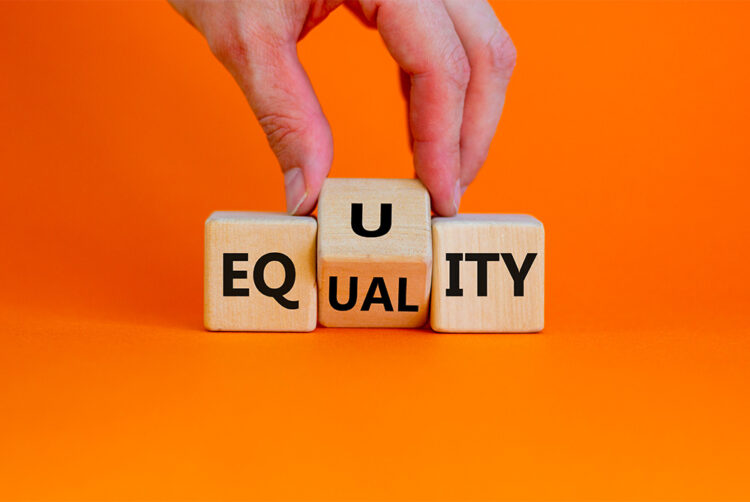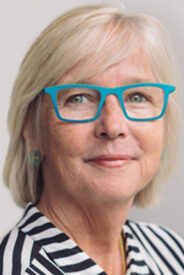Limits of equality: we can’t treat everyone the same to succeed

Opinion
The push to hire from more diverse backgrounds needs to be backed up with more support to help people acquire the knowledge and skills they need to perform.
These days the acronym DEI rolls easily off people’s lips, replacing the more familiar D&I, without necessarily understanding why ‘E’ has been inserted. I find people either mistakenly believe the E stands for ‘equality’, or if they do know it stands for ‘equity’, often can’t effortlessly articulate the difference. Let alone work through what it may mean for them as a leader.
Equality in the context of the workplace means that everyone is treated the exact same way. Effectively ensuring that there is a level playing field with every individual given the same resources or rights to opportunities. A good example of this would be the increasingly popular equal parental leave whereby mothers and fathers, regardless of whether they are the birth parent, undergoing adoption or surrogacy would have access to the same benefits.
Another, ratified in law, is that of equal pay for equal work whereby everyone who does the same job should get the same salary.
Most people know that the Equality Act of 2010 makes it illegal to discriminate against people with certain protected characteristics. These have been identified currently as age, gender reassignment, being married or in a civil partnership, being pregnant or on maternity leave, disability, race including colour, nationality, ethnic or national origin, religion or belief, sex or sexual orientation.
If you have ever wondered why many people were not open about being gay or transgender in the workplace before 2010, it’s because they would have had no recourse in law if they were sacked as a result of coming out. The protection of the state has been a very positive precursor to people being more authentic. The safer people feel, the more they will be able to be themselves, and give more of themselves at work.
Equity demands more of us as leaders
Whilst the quest for equality has been a positive force and inhibited discrimination in a number of important areas, it doesn’t in itself automatically lead to positive outcomes for everyone. For example, women may be paid equally for doing the same job as a man, but still never get a promotion. The notion of equity takes us beyond concepts of equality, and invites us to consider the fact that you won’t have a universally thriving workforce if you simply treat everyone the same.
We cannot assume that treating everyone equally will in itself ensure everyone is able to achieve their potential. Equitable leadership requires us to identify disparities and ensure everyone has what they need to achieve success. The difference has perhaps been best brought to life with a simple visual published by The Interaction Institute for Social Change (Artist: Angus Maguire), which simply illustrates how equality by itself doesn’t deliver fairness.

It is not only useful as a way of showing how equity works, but it provides a useful metaphor for leaders. In this drawing, the person who is naturally tall is able to see over the fence without any additional help. Whereas the person on the right requires twice as much support as the one in the middle.
I find it useful to consider what leaders need to do to provide ‘the right box’ for each individual in their team. What is in the box could range from training to closer supervision and mentoring, making sure everyone contributes their thoughts in a meeting and not the most outspoken, or providing financial and recognition-based incentives instead of event-based incentives (so often centred around alcohol or formal dress codes).
All too often, immense effort is put into hiring people who are different, and too little thought given to the support ‘box’ they may need when they join.
One explanation is that we are too often ignorant as to the barriers they may be facing at any one time, or if we are, fail to find a way to address it.
Another is that the concept of equality gets in the way. For whatever reason we don’t want to be seen to allocate resources more heavily in favour of one group over another. Particularly, as the visual above shows, something is seen to be taken away from one group in order to provide additional resources to another.
But, if we want to be equitable as leaders, it’s on us to educate ourselves about the barriers people might face and find ways to do something about it.
Gender equality has been more accessible as a subject
The effort we put into fostering inclusive cultures in our workplaces is endlessly challenging and fascinating. There is so much to learn. Particularly for those of us who belong to an older generation, because so little attention was given to it in the management training we received.
Historically, I would say that disproportionate focus was given to gender inequality. The absence of half the population from certain jobs or leadership positions was easy to see, without the need for statistics. A photograph spoke volumes and anecdotes flowed easily about everyday sexism and misogyny. I remember being told that gender equality should be prioritised as the lead issue to address, and everything else would naturally follow. Except it didn’t.
Yes, progress has been made, but at a snail’s pace. And this is where the idea of addressing inequity becomes transformative. It gives us the framework to understand why simple act of recruiting a diverse workforce doesn’t deliver equality of outcomes on its own.
‘Sink or Swim’ doesn’t cut it if you want to accelerate your progress on inclusion and reap the benefits of true diversity in thinking and lived experience. Consideration must be given to what stops people achieving their potential.
Equity requires us to know the individual
Gimmicks like blind CVs are designed to obscure any understanding of a person’s specific lived experience, let alone their work experience. Recruiting school leavers instead of graduates is all very well, but not if you are not prepared to put in place the training required to compensate for the lack of that further education.
Making an imaginative middle-management hire or promotion, recognising the potential of an individual, won’t come off if nothing is done to help them acquire the knowledge and skills they need to perform in the role. And making an imaginative and lateral hire at a senior level won’t work if you are not up for challenge and change.
I wish I had thought more about this in my career. Someone once wisely said to me that good leaders don’t just lead a team of people, they recognise and lead the individuals in the team. And part of that these days is to find a way to understand the lived experience of the people we work with, so we know what they need to succeed. It can be a tricky path to tread. Allowing people to authentically reveal themselves to you, without being intrusive or becoming their rescuer, requires empathy and skill.
People hate being identified as ‘the diversity hire’. It implies not having the skill or potential to do the job. I have had enough experience of being the ‘first woman’ to know the discomfort and weight of that responsibility, too.
To be a woman is not to represent the views of all women. That is what I draw on when I think about addressing inequities. Remembering all those moments when I was excluded from rooms and occasions when opinions were formed, and decisions made without me, even though I was meant to be in the team.
I could have done with a leader who at least asked me what it was like to be in my shoes, and didn’t expect them to be high heels.
 Jan Gooding is one of the UK’s best-known brand marketers, having worked with Aviva, BT, British Gas, Diageo and Unilever. She is now an executive coach, chair of PAMCo and Given. She writes for The Media Leader each month.
Jan Gooding is one of the UK’s best-known brand marketers, having worked with Aviva, BT, British Gas, Diageo and Unilever. She is now an executive coach, chair of PAMCo and Given. She writes for The Media Leader each month.
Career Leaders: The Media Leader‘s weekly bulletin with thought leadership, news and analysis dedicated about media careers, training, development and wellbeing.
Sign up for free to ensure you stay up to date every Tuesday.




